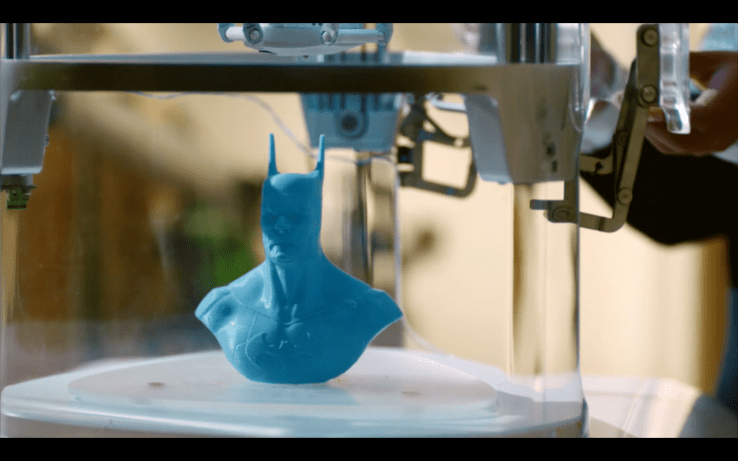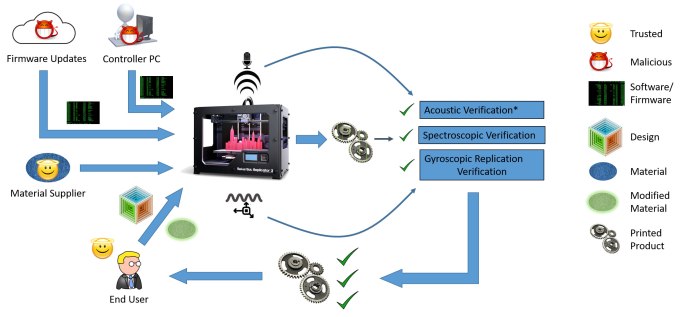
As 3D printers grow smarter and continue to embed themselves in manufacturing and product creation processes, they are exposed to online malefactors just like every other device and network. Security researchers suggest a way to prevent hackers from sabotaging the outputs of 3D printers: listen very, very carefully.
Now, you’re forgiven if someone hacking a 3D printer doesn’t strike you as a particularly egregious threat. But they really are starting to be used for more than hobby and prototyping purposes: prosthetics are one common use, and improved materials have made automotive and aerospace applications possible.
The problem, as some security researchers have already demonstrated, is that a hacker could take over the machine and not merely shut it down but introduce flaws into the printed objects themselves. All it takes is a few small air gaps, a misalignment of internal struts or some such tweak, and all of a sudden the part rated to hold 75 pounds only holds 20. That could be catastrophic in many circumstances.
And of course the sabotaged parts may look identical to ordinary ones to the naked eye. What to do?
A team from Rutgers and Georgia Tech suggests three methods[1], one of which is easy and clever enough to integrate widely — a bit like Shazam for 3D printing. (The other two are still cool.)
 I don’t know if you’ve ever been next to a printer while it works, but it makes a racket. That’s because many 3D printers use a moving print head and various other mechanical parts, all of which produce the usual whines, clicks and other noises.
I don’t know if you’ve ever been next to a printer while it works, but it makes a racket. That’s because many 3D printers use a moving print head and various other mechanical parts, all of which produce the usual whines, clicks and other noises.
The researchers recorded those noises while a reference print was being made, then fed that noise in bits to an algorithm that...